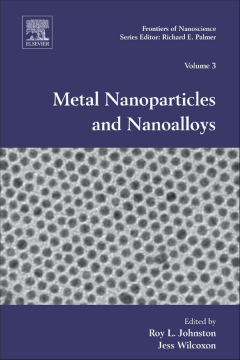
Additional Information
Book Details
Abstract
The field of nanoscience has undergone tremendous growth in the past decade as the number of applications of nanoparticles and nanostructured materials have proliferated. Metal nanoparticles have attracted particular interest due to their potential for applications in areas as diverse as catalysis, medicine and opto-electronics. The chemical and physical properties of metal nanoparticles can vary smoothly or discontinuously with nanoparticle size, depending on the size regime and the property. In the case of bi- or multimetallic nanoparticles ("nanoalloys"), these properties also depend on the elemental composition and the chemical ordering – how the metals are distributed in the nanoparticles.It is this tunability of behavior that makes metal nanoparticles and nanoalloys so versatile and appealing. This book begins with a tutorial introducing the theoretical ideas and models that have been developed to understand metal nanoparticles. It gives an overview of experimental methods for generating and characterizing metal nanoparticles and nanoalloys and of their properties and applications, providing an introduction to material covered in more depth in subsequent chapters. A major theme of all the chapters is the effect of nanoparticle size, shape and surface chemistry on their properties – especially optical and catalytic properties.
- A unified discussion of the inter-relations between modelling, synthesis and physical properties of nanoparticles and nanoalloys
- A discussion of the most promising new catalytic and photocatalytic applications of nanoparticles and the approaches used to achieve these goals
- A tutorial introduction which provides a basis for understanding the subsequent specialized chapters
"European physicists and chemists explore particles of metal in the range of 1-20 nanometers from the perspectives of preparation, characterization, and physical properties; insights from theory and computations into ligand-protected gold nanoclusters as superatoms; the theoretical modeling of oxide-supported metal nanoclusters and nanoalloys; scanning transmission electron microscopy studies of monometallic and bimetallic nanoclusters; and applying gold nanoparticles in catalysis."--Reference and Research Book News, August 2012, page 247
